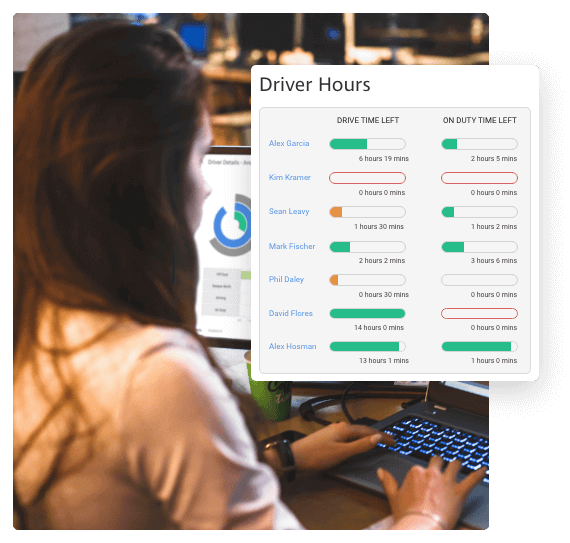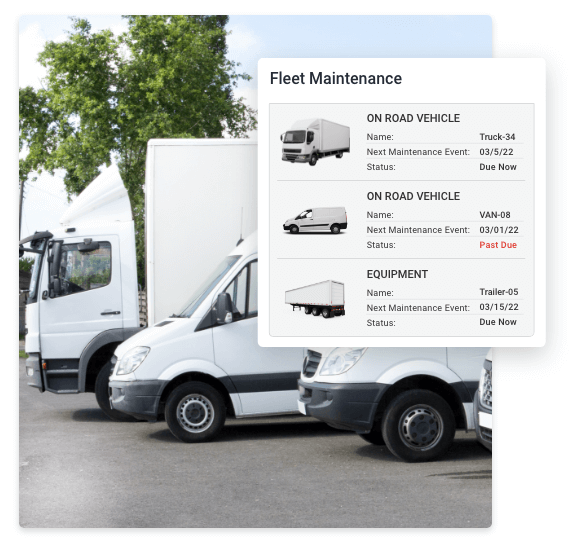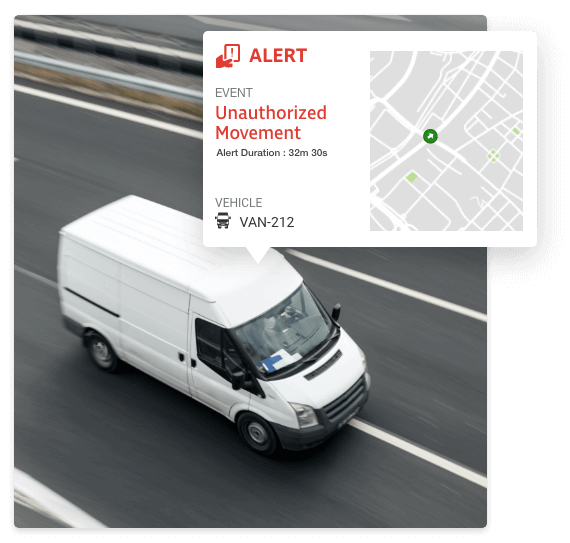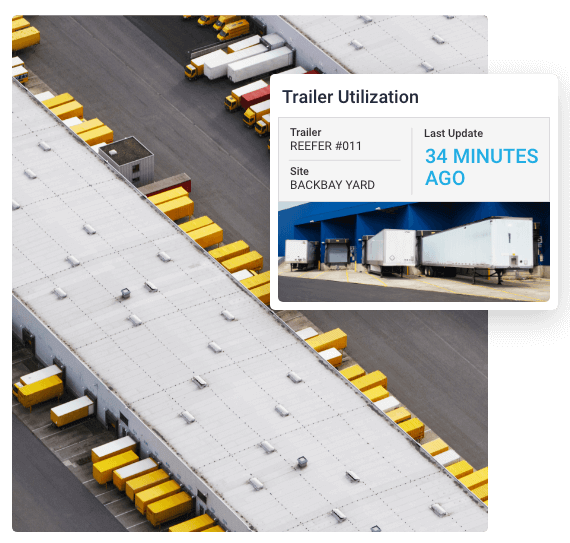Key Takeaways
With the vast amount of data available in fleet management software it is important that fleet managers understand what areas of their operation they want to change and what data points they should focus on to understand performance and improvement. In this article we outline the data that is captured in fleet management systems and give our 5 top tips on how you can unlock its value.
What Data is Captured by Fleet Management Software?
Fleet management software can capture a wide range of data across many areas that impact the day-to-day operations of your fleet. Below are the most critical areas and the different data that can be captured:
Fleet Safety
Driver safety is a key point of focus for many businesses and there is large amount of data that can help fleet managers monitor and improve safety. Most fleet management systems focus on capturing data to build a picture of driver behaviour, these data points include:
- Speeding events
- Heavy acceleration
- Harsh breaking
- Aggressive cornering
- Stop sign violations
More sophisticated solutions that incorporate smart dashcams can provide additional insight by applying context to events. For example, you can see that a driver is harsh breaking regularly when changing lanes or that a driver is frequently accelerating quickly and not keeping enough space between themselves and the vehicle in front. Smart dashcams also have the ability to identify positive driver actions and additional events including:
- Distracted driving - being on the phone whilst driving
- Tailgating - following the vehicle in front too closely
- Sign post violations - including stop signs and no u-turn signs
- Driving without a seatbelt
With the wealth of safety data available it is important that your fleet management analytics simplifies this data and gives you actionable information. The use of customisable driver scorecards is a great way to simplify the tracking of driver safety and keep your coaching focused on key improvement areas.

Compliance
Fleet management analytics makes it easier to discover the source of problems that may pose a risk to compliance. One key area is fatigue management and it is important that fleet managers keep track of how many hours drivers have worked, that drivers are taking the required rest breaks and have visibility into available hours to plan work schedules.
An Electronic Work Diary (EWD) captures real-time driver hours and rest data, proactively notifies drivers of required rest breaks and keeps fleet managers updated on available hours. It is important that your fleet management analytics takes these data points and gives you and your drivers quick and easy access to this information, so you can keep your drivers safe and violation free.
Other areas of compliance that fleet management analytics can streamline are Fuel Tax Credits (FTC) Management reporting and Digital Forms & Checklists. By capturing real time data fuel tax reports can be automated and vehicle maintenance events can be quickly escalated and resolved.

Maintenance
The analytics in a fleet management system should enable you to get a complete picture of maintenance requirements across your fleet. By using the computerized maintenance management system you can create maintenance schedules that can be assigned to your vehicles and track what maintenance is passed due, due now and completed. With all completed maintenance digitally stored the fleet management analytics tools can report on maintenance completed, the cost and break this down by engineer and vehicle.
Fleet maintenance software should also give you much better visibility into upcoming maintenance requirements, enabling you to forecast parts inventory and vehicle downtime. This can help you to cut down the time vehicles are off the road and reduce the impact of maintenance events on your operation.

Environment
As sustainable business operators we all have a focus on ensuring environmental impact is at a minimum, but with gas prices rising quickly, fleet managers have yet another reason to be focused on reducing fuel usage. Fleet management software provides data in two key areas:
- Driver Behaviour: By tracking instances of excessive idle time and poor driving behaviours, such as speeding and harsh acceleration you can use telematics data to put policies and training in place to limit waste. The platforms can also track driver fuel economy and can even rank drivers enabling you to create reward programs.
- Unnecessary Mileage: By having real time data on the location of your drivers, you can optimise job assignment by ensuring that you’re dispatching jobs to closest available vehicle. You can also monitor if vehicles are being used outside of work hours, the mileage driven and associated costs.

Utilisation
Your fleet management system should provide data to support capacity planning by providing quick access to vehicle and asset utilisation information. With data showcasing what level of utilisation you have across your assets you can understand if you need to acquire additional vehicles, or if you can cover demand with your current resources.
Simplify Fleet Analytics
See how the Insights engine in TN360 makes it easy to understand fleet performance and take actions that drive improvement.
The more advanced systems can also help identify areas of inefficiency that can free up capacity. For example, they can highlight if there are specific customer sites where wait times are excessive, if certain job types are taking a driver longer than others or if there is a route which keeps on getting slowed down due to traffic congestion.

5 Tips to Unlock the Value of Fleet Management Analytics
1. Define the Questions You Want to Answer
Before capturing valuable data, you must first determine the most important data to collect. Determining what problems need to be addressed and the questions you need to answer is the first step in unlocking the value of analytic data. Meetings with managers, supervisors, and group leaders are a great way to conceptualize critical areas and identify the questions that you need to answer.
2. Outline the Data That Will Answer Those Questions
Once you know the questions you want to answer, you can look to the data and see what metrics will help you understand performance and show improvement. Fleet management analytics uses innovative and AI-powered technology to provide managers with data that helps resolve short and long-term issues. Whether it is evaluating distracted driving, unauthorised use, excess fuel consumption, or procurement planning, managers will find this data readily available and accessible.
3. Create Simple and Accessible Reports
Once you know which metrics to focus on it is important to create digestible, informative, and unambiguous reports that can be easily shared within teams. Fleet management software is designed to make data easily accessible through reports, dashboards and search functions, saving fleet managers a huge amount of time by automating administrative processes.
4. Develop a Dedicated Improvement Action Plan
Capturing and reporting on the data is only the first step. It is important that you set regular performance review meetings and have a dedicated action plan that is focused on driving change in the key improvement areas. Setting clear action ownership and timelines is another way to ensure that progress is being made.
5. Be Prepared to Implement Changes
Modifying long-standing behaviors and procedures requires leadership and employee support. Fleet managers should prepare to follow through with changes by gaining leadership support on modification projects that are backed with performance and impact data.
See How We Can Help
We understand that your business is unique, which is why we have a listen first approach and aim to understand how we can help you make progress towards achieving your short and long term goals. Our fleet management software is focused on providing the right insight so managers can quickly implement data driven decision making into their business. If you’re thinking that you should be getting more out of fleet management analytics, contact us today to speak with one of our experts.

